- Home
- Martin Amis
The Moronic Inferno and Other Visits to America Page 2
The Moronic Inferno and Other Visits to America Read online
Page 2
Not so with Bellow. His heroes are well tricked out with faults, neuroses, spots of commonness: but not a jot of Bellow's intellectuality is withheld from their meditations. They represent the author at the full pitch of cerebral endeavour, with the simple proviso that they are themselves non-creative — they are thinkers, teachers, readers. This careful positioning allows Bellow to write in a style fit for heroes: the High Style. To evolve an exalted voice appropriate to the twentieth century has been the self-imposed challenge of his work. It began with The Adventures of Augie March (1953), at times very shakily: for all its marvels, Augie March, like Henderson the Rain King, often resembles a lecture on destiny fed through a thesaurus of low-life patois. Herzog erred on the side of private gloom, Humboldt on the side of sunny ebullience (with stupendous but lopsided gains for the reader). Mr Sammler's Planet (1970) came nearest to finding the perfect pitch, and it is the Bellow novel which The Dean's December most clearly echoes.
The High Style is not a high style just for the hell of it: there are responsibilities involved. The High Style attempts to speak for the whole of mankind, with suasion, to remind us of what we once knew and have since forgotten or stopped trying to regrasp. 'It was especially important', Corde reflects, 'to think what a human being really was. What wise contemporaries had to say about this amounted to very little.' The Bellow hero lays himself open to the world, at considerable psychological cost. Mr Sammler is 'a delicate recording instrument'; Herzog is 'a prisoner of perception, a compulsory witness'. All that can be done with these perceptions, these data, is to transform them into — into what? Humboldt suffered from 'the longing for passionate speech'. Corde, like Sammler, aches to deliver his 'inspired recitation'. It is the desire to speak, to warn — to move, above all.
Albert Corde is 'an image man', 'a hungry observer'. He has a 'radar-dish face', for ever picking up signals 'from all over the universe'.
He looked out, noticing. What a man he was for noticing! Continually attentive to his surroundings. As if he had been sent down to mind the outer world, on a mission of observation and notation. The object of which was? To link up? To classify? To penetrate?
Corde has 'the restless ecstasy' common to Bellow's heroes — a global version of Henderson's 7 want, I want, I want. He suffers from 'vividness fits', 'storms of convulsive clear consciousness', 'objectivity intoxicated'. And it wasn't just two, three, five chosen deaths being painted thickly, terribly, convulsively inside him, all over his guts, liver, heart... but a large picture of cities, crowds, peoples, an apocalypse...
Up to now the Bellow hero has always kept these convulsions to himself. They provide the substance of his meditations and, at most, they give the spur to some climactic effort of passionate utterance — to a friend, a girl, anyone who will listen. But Corde, like the book built round him, has gone public. The key to his self-exposure, and self-injury, is his journalistic outpouring on Chicago, which might almost be seen as a pre-emptive strike for the novel itself. Corde's articles are reckless, irresponsible: but their main presumption, as Dewey Spangler gloatingly points out, is that they are full of 'poetry'. They constitute an act of romantic regression and are an embarrassment to everyone, Corde included.
An old childhood pal, Spangler is 'just another VIP' (in his own words) passing through Bucharest in a 'sweep' across Eastern Europe. Like Dr Temkin in Seize the Day, or Allbee in The Victim, Spangler is a malevolent alter ego, a traveller on a parallel path, the wrong path. He lives in 'a kind of event-glamour', unaware that the increase of theories and discourse, itself a cause of new strange forms of blindness, the false representations of 'communication', led to horrible distortions of public consciousness. Therefore the first act of morality was to disinter the reality, retrieve reality, die it out from the trash, represent it anew as art would represent it.
The alternative to the East is not the West; the alternative to the West is not the East. The alternative to both is the unobtainable world glimpsed through art, the 'pangs of higher intuition' which balance 'the muddy suck of the grave underfoot'.
So matters have long stood in Bellow's topology. According, however, to The Dean's December (and the title is not autumnal so much as candidly wintry), a great and uncovenanted unification is at hand. Seeing the first marks of old age on an ex-lover's face, Herzog identified 'death, the artist, very slow'. But if death has always been an artist, he is now an ideas-man too, a formidable illuminator. Mr Sammler, in his lucid ripeness, felt the 'luxury of non-intimidation by doom' and was free to make 'sober, decent terms with death'. With the Dean it is more a case of creative collaboration, of ecstatic symbiosis. In an extraordinary paragraph Corde looks down at the Chicago lakescape through die guardrails of his sixteenth-storey balcony:
It was like being poured out to the horizon, like a great expansion. What if death should be like this, the soul finding an exit. The porch rail was his figure for the hither side. The rest, beyond it, drew you constantly as the completion of your reality.
La Rochefoucauld said that neither 'the sun nor death can be looked at with a steady eye'. Maybe this is Bellow's last assignment - the eye narrowed, as it must be, by the strictest, the most precise artistry. Saul Bellow has always been an energetic recycler of his own experience, and The Dean's December shows signs of the flattened, chastened, almost puritanical mood which waylays the traveller to a stricken country. 'They set the pain level for you over here,' as Corde remarks. Some readers may regard the result as a top-heavy novel, with too much instruction, and not enough delight. But there are many, many thrilling pages here. Reading Bellow at his most inspired, you are reminded of a scene in Augie March, when Augie, down on his luck in a small Mexican town, sees Trotsky alight from his car in the cathedral square:
what it was about him that stirred me was the instant impression he gave — no matter about the old heap he rode in or the peculiarity of his retinue - of navigation by the great stars, of the highest considerations, of being fit to speak the most important human words and universal terms. When you are as reduced to a different kind of navigation from this high starry kind as I was and are only sculling on the shallow bay, crawling from one clam-rake to the next, it's stirring to have a glimpse of deep-water greatness. And, even more than an established, an exiled greatness, because the exile was a sign to me of persistence at the highest things. ‘
* * *
The Dean's December promised the arrival of a fresh inspiration in Bellow's work, and this stirring collection, Him With His Foot In His Mouth, confirms that it is here to stay. Without tempting providence too much, I think we can agree to call the new phase Late Bellow. It has to do with last things, leave-taking, and final lucidities.
Late Bellow expresses itself through the familiar opposition: a rich, generously comic and fanatically detailed record of the human experience and habitat, set against a wayward dreaminess or mooniness, an intoxicated receptivity to ideas — Bellow's own poetry of meditation. None of these delights is withheld, but there are now two changes of emphasis. First, a more formal artistry, with sharper focus, a keener sense of pattern and balance. And secondly a countervailing ferocity in his apprehension of the peculiar disorders and distortions of the modern era. 'I don't know what the world's coming to' may not sound like much of a topic-sentence when you hear it at the bus-stop — yet this is Bellow's subject. Actually it is the central subject, and always has been.
While he concedes that America is now ruled by drunkards, liars and venal illiterates, Bellow decides that the most vivid symptoms of distemper can be found a little closer to home. On the lake-front, shrubs are razed and sentry-box toilets are installed, to thwart rapists. In a snow-bound airport a woman asks an official for directions, and, instead of being merely rude or unhelpful, he stamps her instep with his heel. City cops moonlight for the Mob as hired executioners. Meanwhile, 'We Care' stickers are gummed to the walls of supermarkets and loan corporations. Meanwhile, a woman consults a lawyer to ask whether she should describe herself as a
person of 'high integrity' or 'known integrity' as she prepares to swindle a medical school. Meanwhile, 'a good American makes propaganda for whatever existence has forced him to become'.
These are stories about Chicago (new and old Chicago) and about families. They shore up one's impression that Bellow's greatness has always been endorsed by two lucky accidents — and this is to belittle neither the strenuousness of his discipline nor the luck of literary talent itself. First, Chicago. When Chicagoans call their home town 'the city that works' they have more in mind than efficiency and high employment, bustle and brawn. They mean that they have accepted money as the only 'vital substance'; and they regard the ubiquitous corruption that results from this as a sincere definition of maturity: 'If you're so smart, how come you ain't rich?' Such distortions, which include an aggressive, even a disgusted philistinism, provide the writer with a wonderfully graphic reversal of human values. Arriving in Chicago in 1914 (from St Petersburg via Montreal), Bellow was uniquely well placed to witness the formation and summation of the American idea — and to stay outside it, in his writer's capsule.
Bellow's second slice of congenital good fortune lies in his Jewishness, which, along with much else, provides him with an unusual tenderness for the human ties of race and blood: 'Jewish consanguinity — a special phenomenon, an archaism of which the Jews, until the present century stopped them, were in the course of divesting themselves.' In the same story Bellow's narrator asks why the Jews have always been such energetic anthropologists, virtually the founders of the science (Durkheim, Lévy-Bruhl, Mauss, Boas, et al.). Was it that they were 'demystifiers', their ultimate aim to 'increase universalism'? The narrator demurs. 'A truer explanation is the nearness of the ghettos to the sphere of Revelation, an easy move for the mind from rotting streets and rancid dishes, a direct ascent into transcendence.’
This describes Bellow's origins as a writer, and perhaps accounts also for the strong vein of (heterodox) transcendentalism in his work. In the middle-period novels the transcendental 'alternative' takes on structural status, affording a radiant backdrop against which the protagonists shuffle and blunder. The primitive prince-liness of Africa in Henderson the Rain King, the Wellsian dreams of lunar escape in Mr Sammler's Planet, the 'invisible sciences' of Humboldt's Gift: these are respectively ranged against the nullity of New England, the hysteria of New York, and the gangsterism — both emotional and actual - of Chicago.
The emphasis on these illusory otherworlds was probably too heavy, laying Bellow open to charges of crankery and self-indulgence. In Late Bellow, however, the transcendentalism has found its true function, which is Yeatsian — a source of metaphor, a system of imagery that gives the reader an enduring mortal pang, a sense of his situation in larger orders of time and space. 'What were we here for, of all strange beings and creatures the strangest?' Bellow has made the real world realer (sharper, harsher), and has confronted its perversities; but human destiny still 'depends on what you think, feel and will about such manifestations or apparitions, on the kabbalistic skill you develop in the interpretation of these contemporary formations'. He keeps a soul's watch upon the world, as passionate as ever and yet disinterested now, with no stake in the outcome.
There aren't any weaklings in the new book: each story has the same consistency of brilliance and vigour. (One of them, 'What Kind of Day Did You Have?', is longer, and better, than Seize the Day.) In the title story an old man languishes in British Columbia, facing extradition to Chicago, a fall-guy for various financial crimes committed by his family. hí's only sin has been his spontaneity, whereas the sins of his adversaries were always shrewdly premeditated. The narrator is one of Bellow's lighter, more playful presences, like Charlie Citrine, who suffered from the same difficulty: 'I mean, if I were a true hypocrite I wouldn't forever be putting my foot in my mouth.' Up in Canada, the only company is the landlady, a mad widow who babbles of the Divine Spirit. No one wants to hear all this, but the old boy finds that he is more than ready to listen:
The Divine Spirit, she tells me, has withdrawn in our time from the outer, visible world. You can see what it once wrought, you are surrounded by its created forms. But although natural processes continue, Divinity has absented itself. The wrought work is brightly divine but Divinity is not now active within it. The world's grandeur is fading. And this is our human setting ...
Of course, the myth of decline — the elegiac vision, which insists that all the good has gone and only the worst remains — has never looked less like a myth and more like a reality. But perhaps the world always looks that way, especially when you start your preparations for leaving it. At the height of his earthly powers, Bellow makes generous reparations to the credit side of the ledger, helping 'to bring back the light that has gone from these molded likenesses'.
London Review of Books 1982. and Observer 1984
The Killings in Atlanta
1. Murder in America
'It looked like a straight verbal mugging. The kid points the gun and says: "Gimme all your money." The guy hands over $90, credit cards, watch, links, everything. Then as the kid walks off he turns around, real casual, and shoots him anyway. These days, man, it's your money and your life.’
'Then the handyman flipped and laid into the old lady with an ax ... Then this transvestite took a monkey-wrench out of his handbag ... Buried her body under the ... Sawed his head off with a ... Watch out for the Downtown Slasher ... the Uptown Strangler ... the Midtown Mangier...’
Conversation about murder in America is as stoical and routine as talk about the weather. A New Yorker will tell you about some lurid atrocity in his own flatblock with no more animation than if he were complaining about the rent. Terrible things happen all the time. This is the terrible thing.
The outsider's view remains hazy, cinematic, exaggerated, formed by cop-operas and a chaos of statistics. To the outsider, American murder seems as vehement and anarchic as American free enterprise, or American neurosis, or American profanity ... But sometimes, and far more worryingly in a way, shapes and bearings do emerge from the turmoil, and portents are suddenly visible among all the blood.
During the week that I was in Atlanta an eighteen-year-old boy cut the throat of an elderly neighbour and stabbed her forty-two times with a butcher's knife (over a trespass dispute); a schizophrenic former jailer and preacher raped and sodomised one woman and then shot both her and her friend in the head; a young crime reporter, having been raped the year before by an escaped convict, was found with thirty-five stab wounds in her chest (the convict was back inside on another rape charge, so it couldn't have been him).
These are killings in Atlanta. But they are not the Killings in Atlanta.
2. The Killings in Atlanta
Piano keys don't lock doors. Footballs don't have toes. And, of course, cabbage heads Don't have a mouth or a nose. And kids don't go with strangers. They never go with strangers.
But they do. In the last twenty months, twenty black children have been murdered in Atlanta. No one has any idea who is doing this or why. District Attorney Lewis Slaton, in his creaking, leathery office, leaned back in his chair and said, 'Oh, we got a lot of theories. But we're not any nearer than we were when this thing started happening. We got no motive, no witnesses, no murder scenes, no hard clues at all. We ain't got lead one.' Only the compulsive confessors, who monotonously turn themselves in at the station houses, seem convinced of the identity of the culprit: 'Me. I did it,' they say. 'I did them all.’
Kids don't go with strangers ... The jingle comes from a local rockabilly hit. Car-bumper stickers say the same thing. So do children's colouring books. There are curfews for minors, haphazardly enforced. The Atlanta Falcons and the Westside Jaycees print trading cards of their teams, with safety tips as captions. There are teach-ins and pray-ins. There is great fear. But kids still go with strangers, one every month.
The murders began in the summer of 1979. It took a long while for any pattern to surface from the tide of Atlantan crime. Every
year five or six black kids meet violent deaths (three, perhaps four, of the current cases are probably unconnected domestic killings: 'the assailant was known to the victim' — this is code talk for murder within the family). A year passed, and a dozen deaths, before anyone sensed the real scope of the disaster, the serial catastrophe, that was overtaking the city.
'Pretty early on I started to get a sick feeling about it,' said Camille Bell, who runs STOP, the Committee to Stop Children's Murders. The walls of her improvised office are covered with maps (coloured pins denote the site of the victims' disappearance and discovery), hand-painted uplift posters ('We are not about Poverty. Instead, we are about Prosperity. Prosperity of the Heart and Soul... ') and information sheets from the Department of Public Safety.
Mrs Bell has a holding device on her telephone. She dodged from call to call. 'Officer? There are two kids hanging around outside All Right Parking. Could you get 'em taken home?' 'Venus, you heard the latest? I'm getting $i,ooo a lecture. Some joke, huh?' As Mrs Bell talked, I scanned the public safety handout. There he was, number four:
YUSEF BELL, BLACK MALE, 9 YEARS OLD
Yusef Bell was last seen on October zi, 1979, en route to a grocery store on McDaniel Street. His body was found on November 8. The cause of death was strangulation.
Camille Bell is a public figure these days. There is a lot of glare in Atlanta now, and a lot of money, federal and commercial. Mrs Bell has her critics. There is talk of cashing in, of joining die parade. I would be ashamed to question Mrs Bell's motives; but these are poor people, and these things are inevitable in America. Camille Bell finished her call and said, 'The fear just grew, all through last year. I just knew it. Someone is stealing the kids off the streets.’

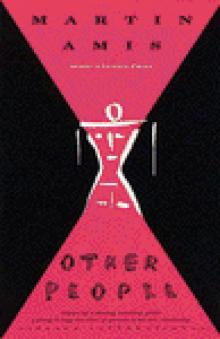 Other People
Other People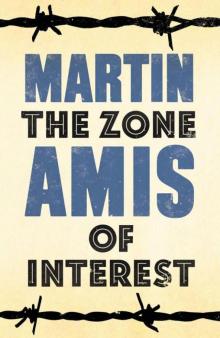 The Zone of Interest
The Zone of Interest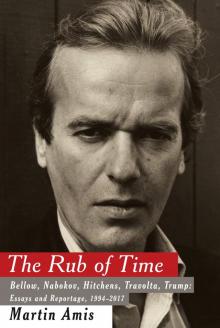 The Rub of Time: Bellow, Nabokov, Hitchens, Travolta, Trump
The Rub of Time: Bellow, Nabokov, Hitchens, Travolta, Trump Koba the Dread
Koba the Dread Success
Success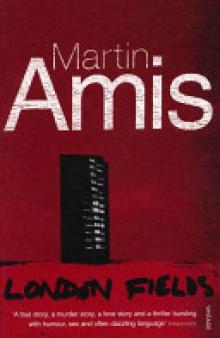 London Fields
London Fields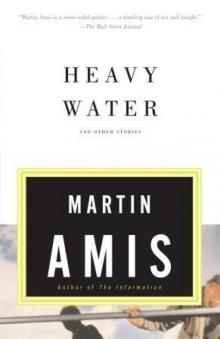 Heavy Water: And Other Stories
Heavy Water: And Other Stories Money
Money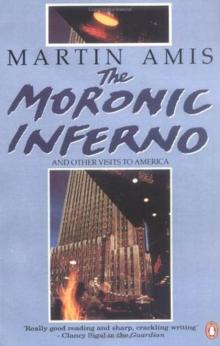 The Moronic Inferno and Other Visits to America
The Moronic Inferno and Other Visits to America Yellow Dog
Yellow Dog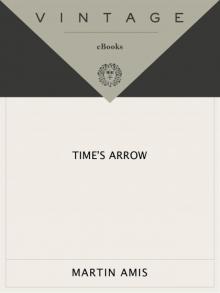 Time's Arrow
Time's Arrow Experience: A Memoir
Experience: A Memoir Einstein's Monsters
Einstein's Monsters The Pregnant Widow
The Pregnant Widow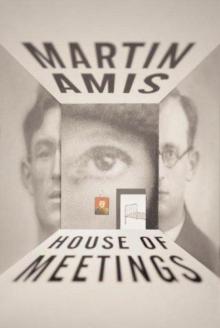 House of Meetings
House of Meetings The Information
The Information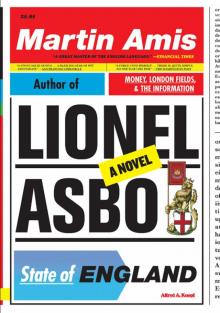 Lionel Asbo: State of England
Lionel Asbo: State of England Lionel Asbo
Lionel Asbo Heavy Water and Other Stories
Heavy Water and Other Stories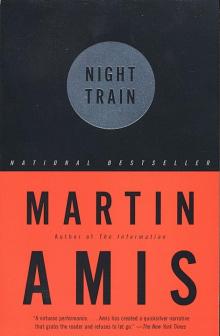 Night Train
Night Train Heavy Water
Heavy Water The War Against Cliche: Essays and Reviews 1971-2000 (Vintage International)
The War Against Cliche: Essays and Reviews 1971-2000 (Vintage International)